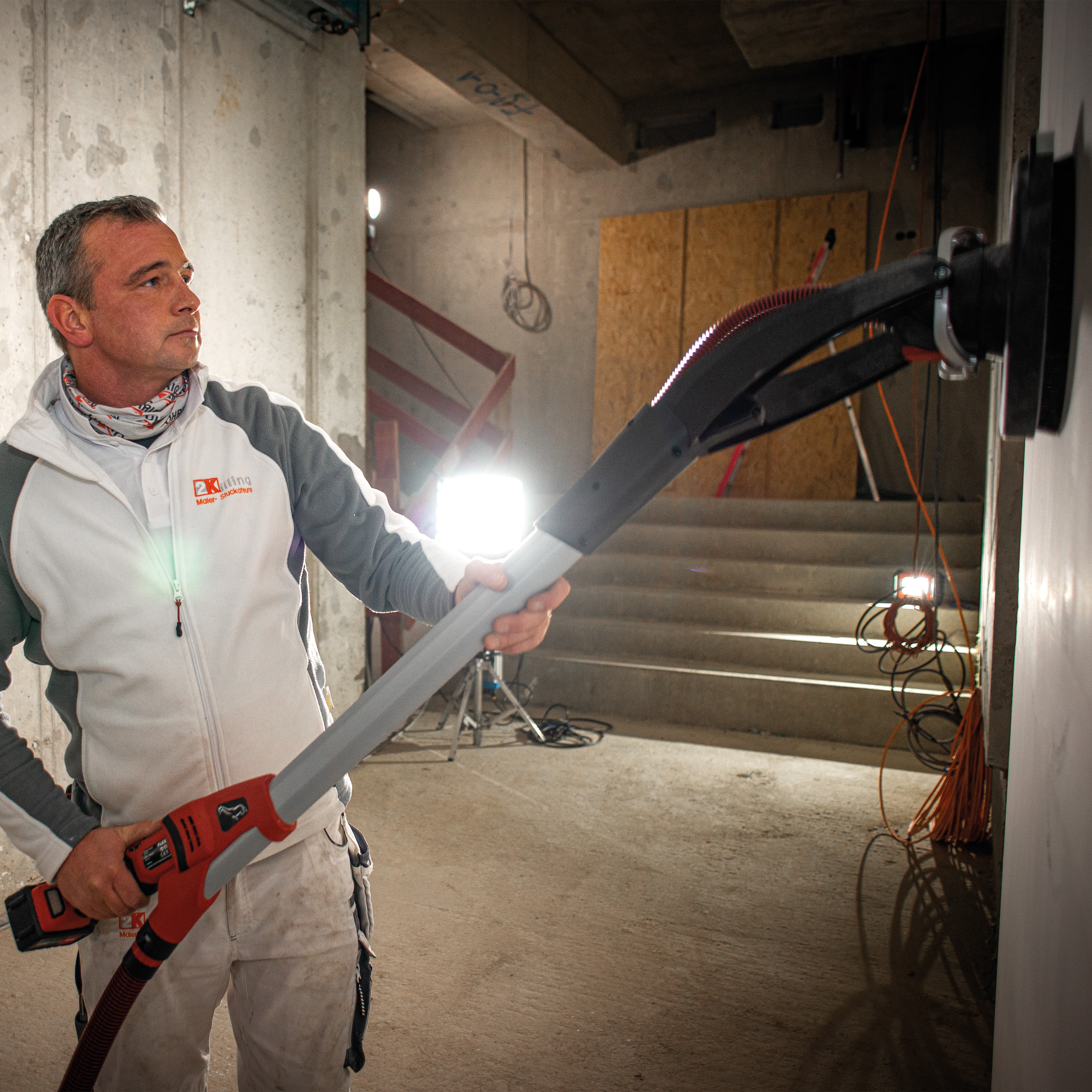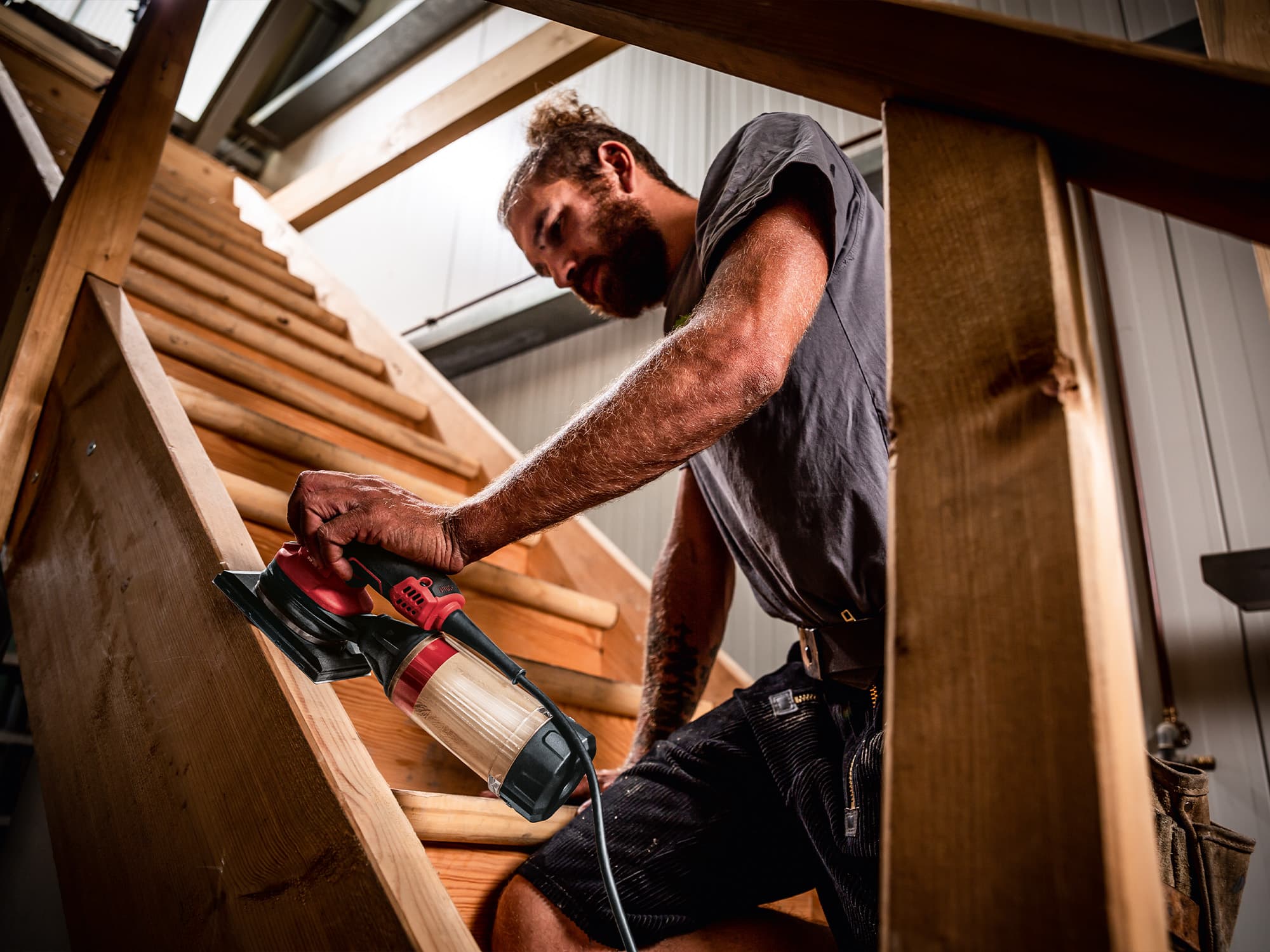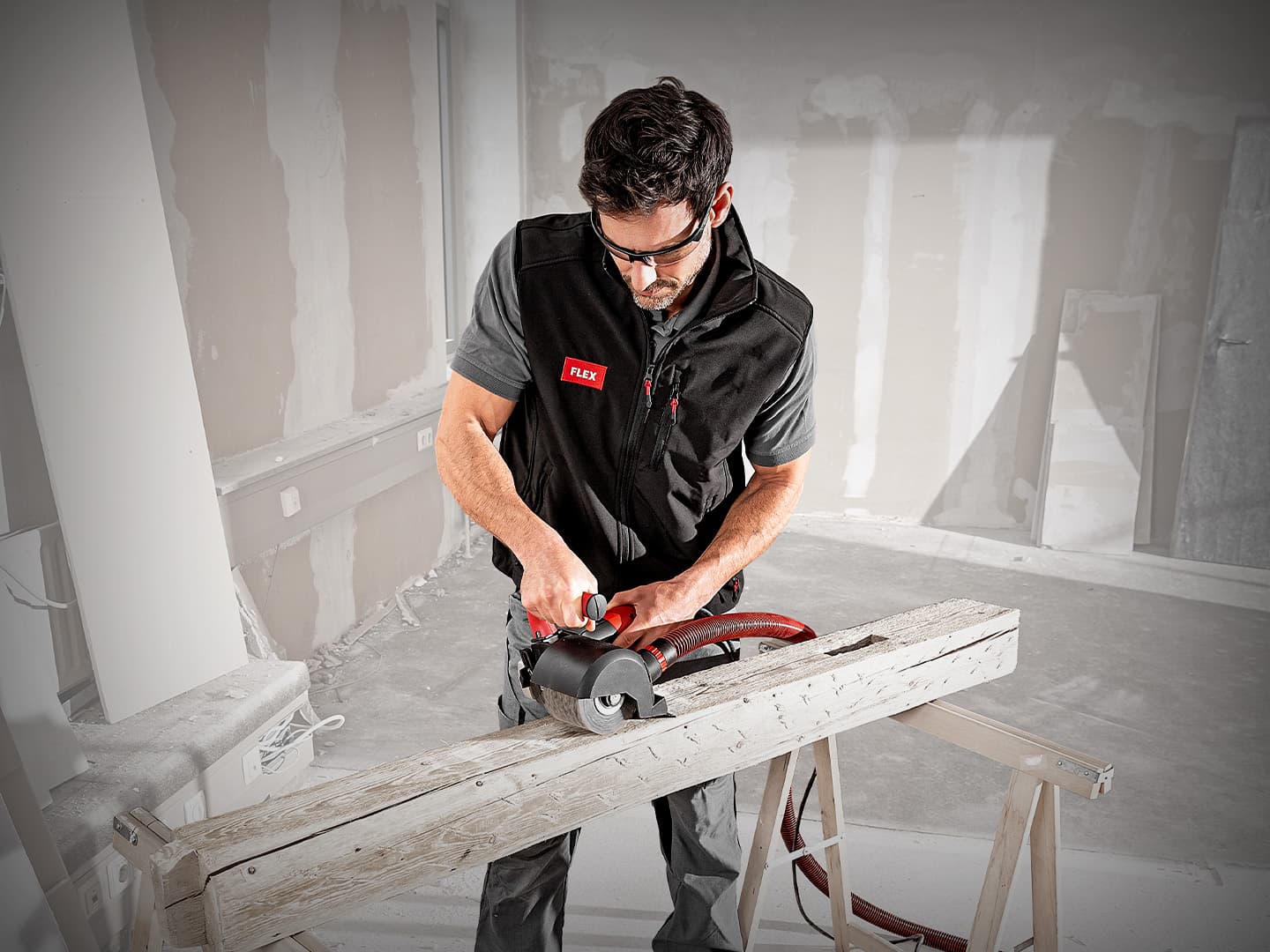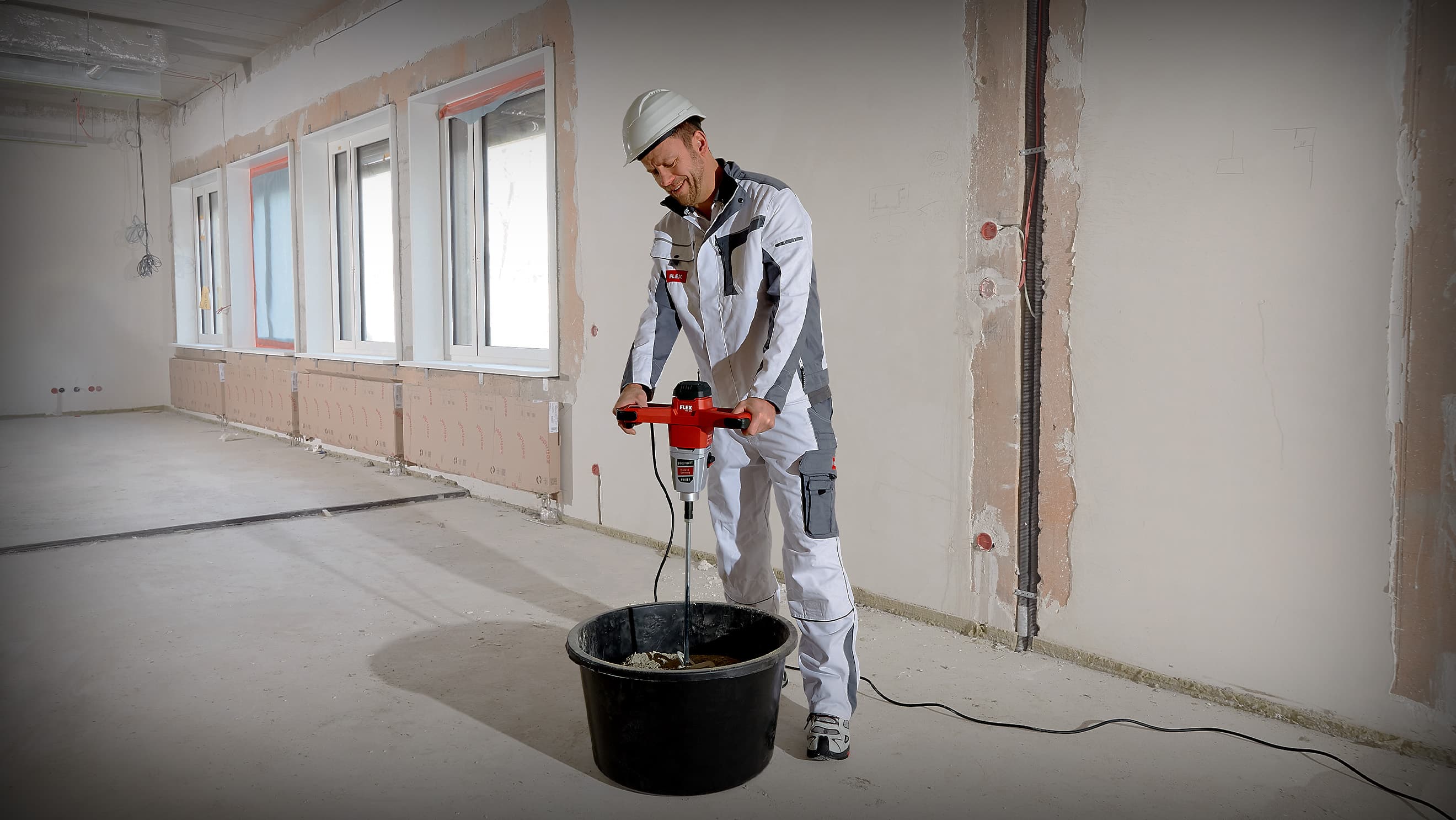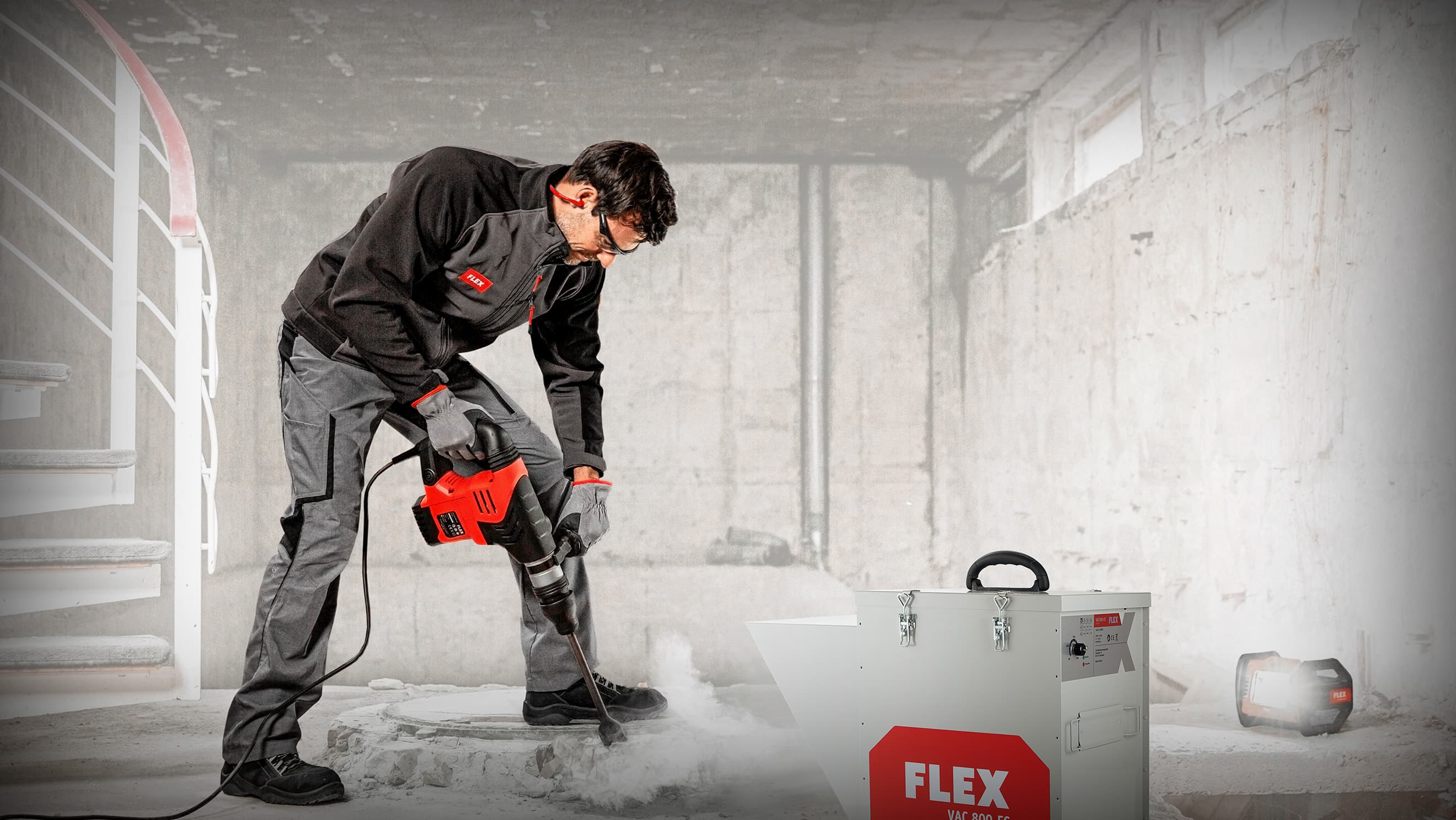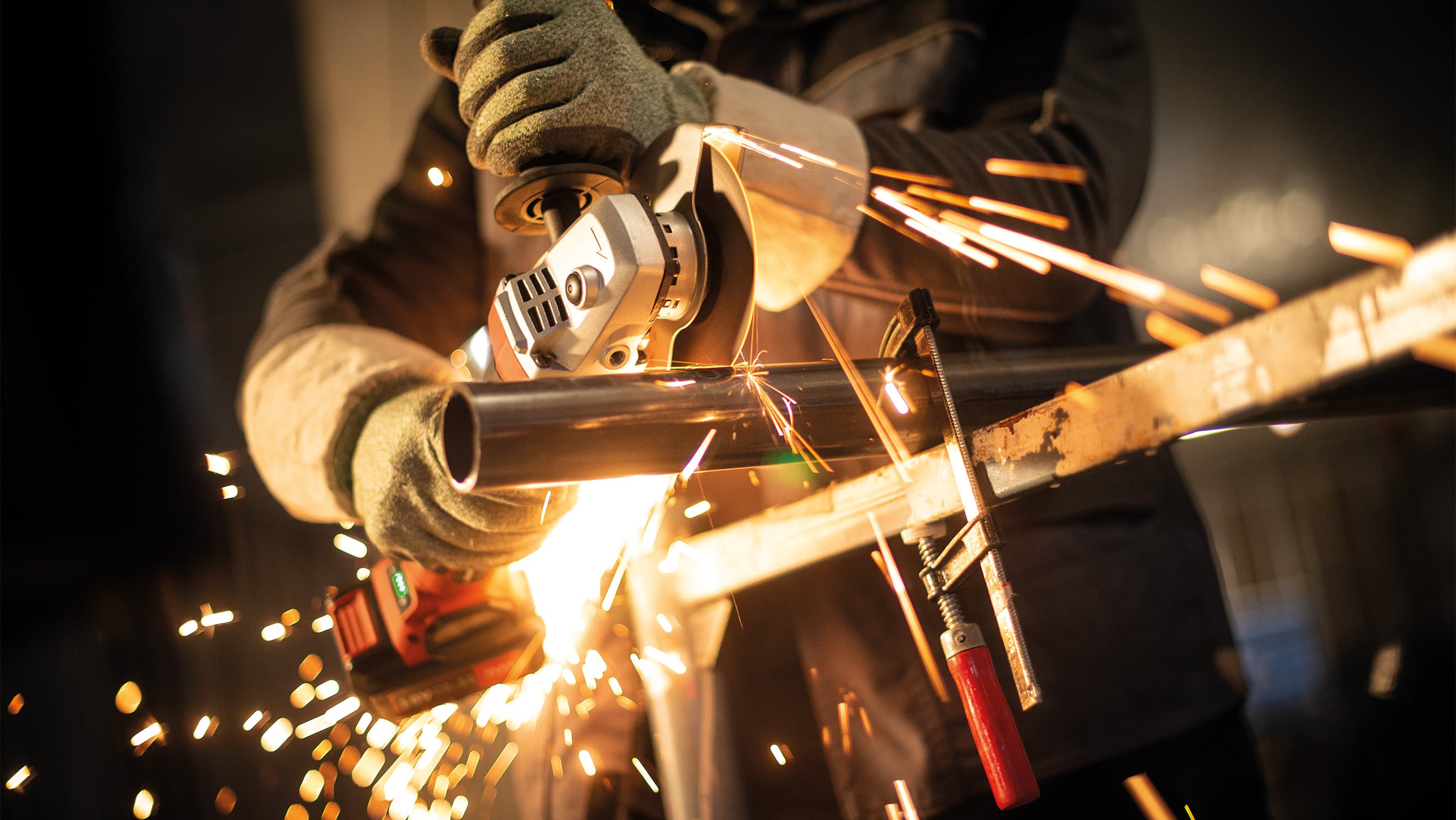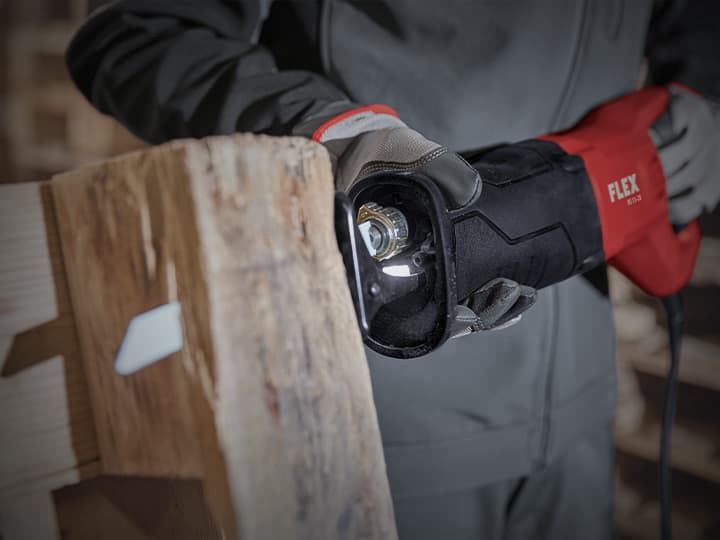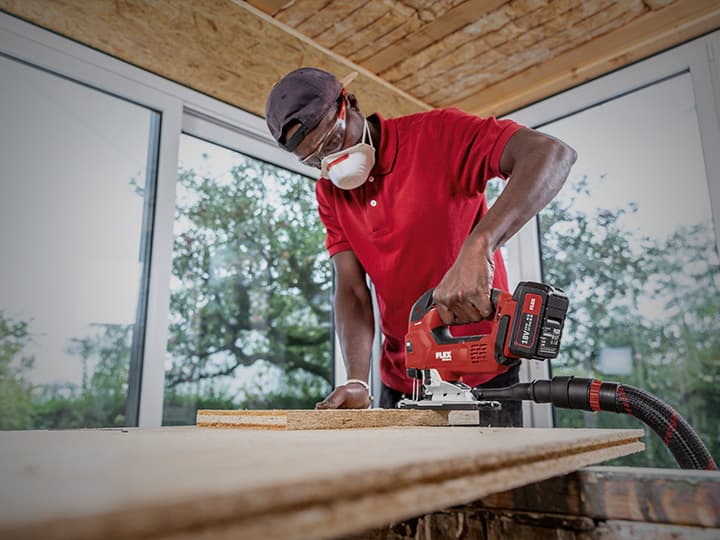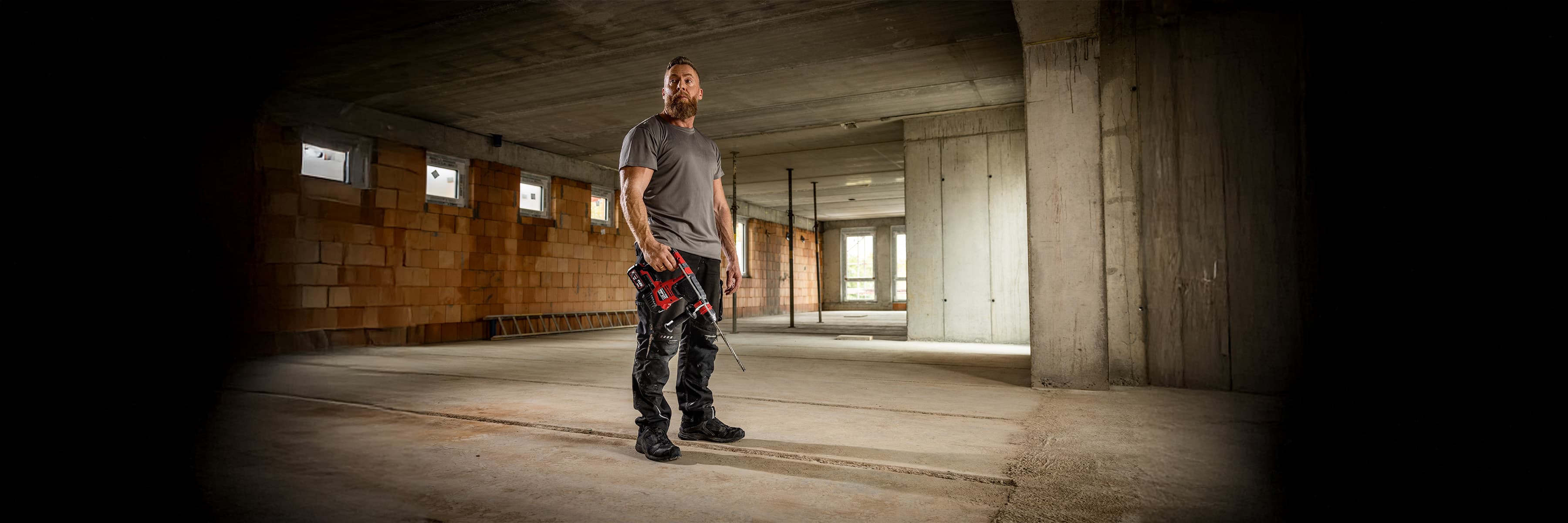
It's all wrapped up.
Building & renovation
The FLEX range for professional renovation, refurbishment and modernisation.
Whether it's preparing substrates, drywall construction, caulking to remove plaster and masonry, gutting or drilling for anchor fastenings - professionals are impressed by precision, reliability and handling. This clearly also applies in spades to their tools and accessories. At FLEX, every one is a master of its trade: from wall and ceiling sanders to mixers and portable vacuum cleaners.
Two giraffes. Two ways.
One goal: perfection.
Which long-neck sander is right for your mission?
With the new GE 6, the choice is yours: opt for the rotary power of the GE 6 R-EC or the precise control of the new GE 6 X-EC with eccentric drive.
The choice is yours!
Renovation and special machines
FLEX offers a wide range of machines for professional renovation and modernisation work - from universal tools to compact renovation grinders for edge grinding and renovation grinders with and without variable speed to renovation grinders for surfaces.
RETECFLEX
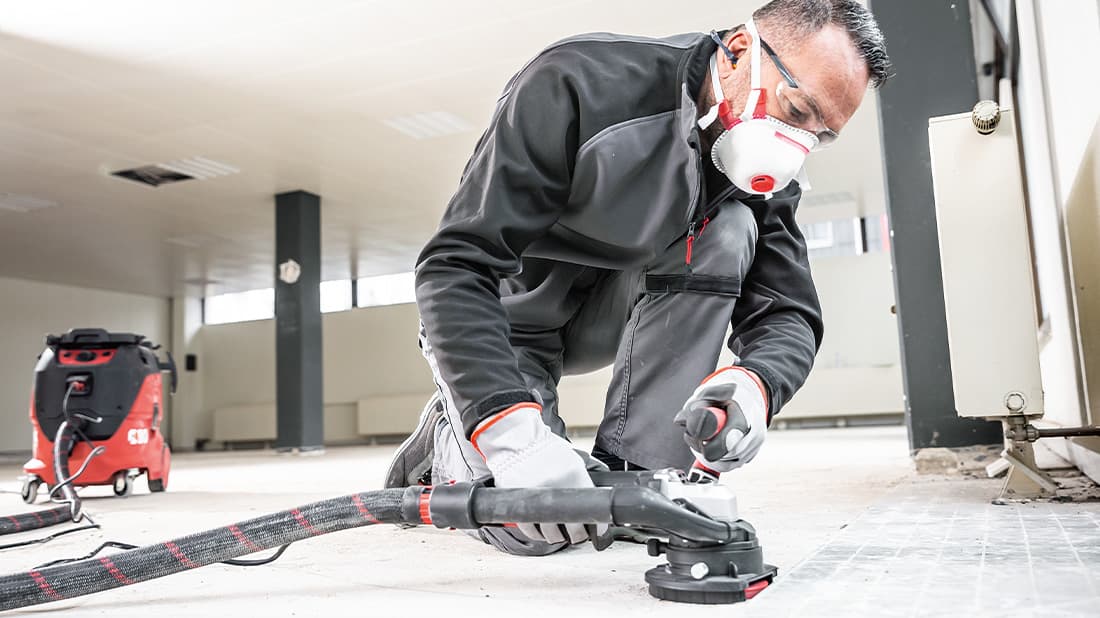
The universal tool for renovation, refurbishing and modernisation.
Its wide speed range enables the RETECFLEX to be used multifunctionally. Whether working on wood, using diamond grinding pads, milling plaster or grinding concrete, the RETECFLEX covers a wide range of possible applications when it comes to renovation and modernising.
FLEX sanders
The compact all-rounders in either cordless or corded versions
Unique compact design, effective dust extraction and handy to use - FLEX sanders with speed control are versatile all-rounders when it comes to renovation. The multi-hole system allows the use of all FLEX pads and all common pads on the market. Available as cordless or corded models, they offer maximum flexibility and mobility on any construction site.
FLEX cordless sanders
The new FLEX cordless sanders, including cordless delta sanders, cordless random orbital sanders and cordless orbital sanders, give you the freedom to work without cables. The powerful rechargeable batteries ensure that you aren’t tied to a power socket even when working for long periods. The multi-hole system expands the application possibilities of the sanders enormously.
FLEX corded sanders
Corded FLEX sanders are an excellent choice for those who prefer uninterrupted continuous performance. They too are available as orbital sanders, random orbital sanders and delta sanders, and they boast a robust design and consistent performance. The effective dust extraction system ensures a clean working environment and a longer pad service life.
Safety vacuum cleaner
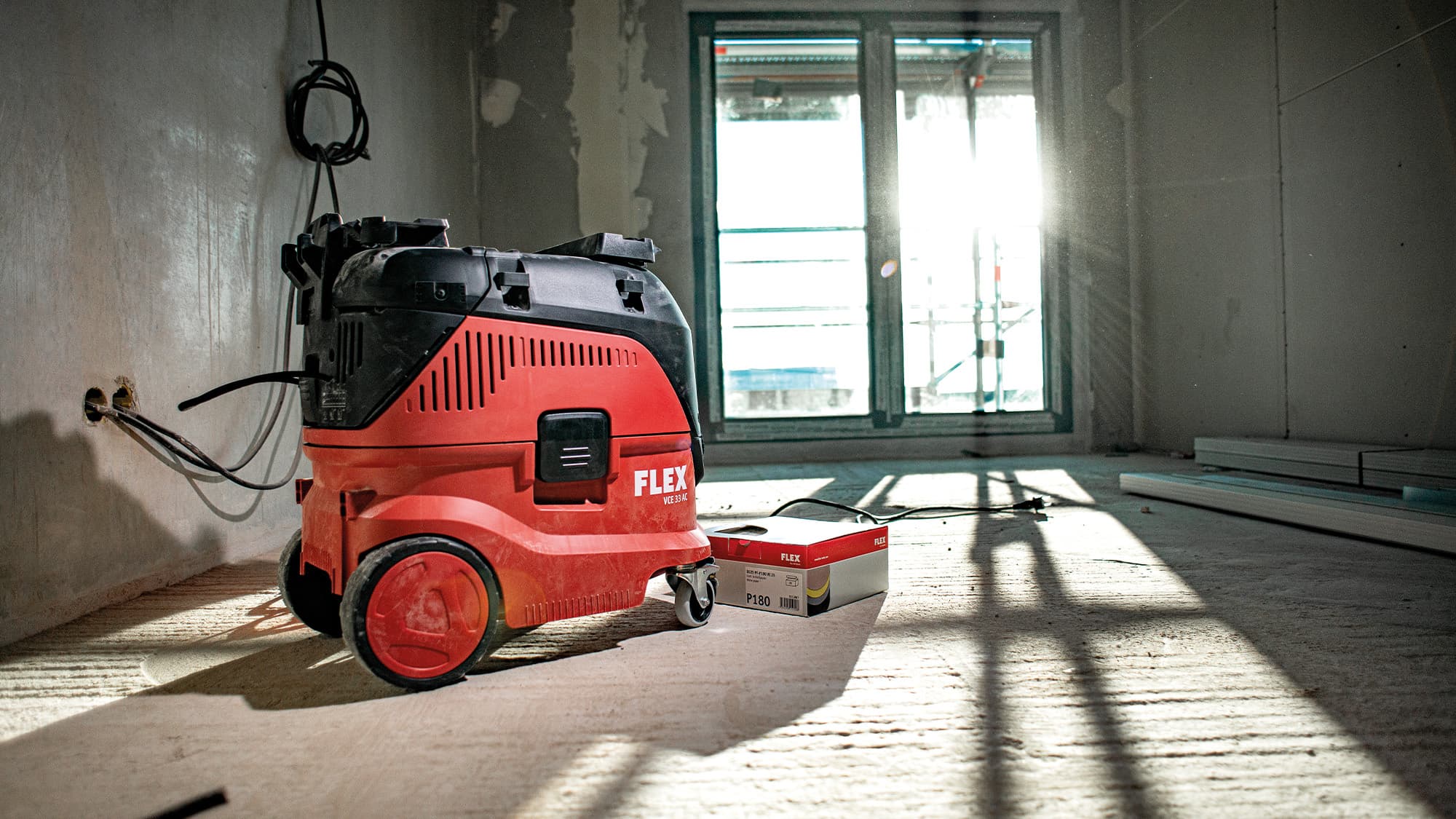
For maximum performance against dust, dirt and hazardous substances. FLEX vacuum cleaners are available in dust classes L, M and H - the right vacuum cleaner for every job. The compact cordless and corded class also ensures outstanding flexibility.
Dust-free and a clean construction site
Power tools with a long run time and service life
Quick stowage of the working material
Multitool

With its versatile applications, the FLEX Multitool is a reliable companion when it comes to renovation, modernisation, construction and refurbishment, as well as for interior finishing, painting and drywall construction.
The applications range from sawing, cutting, cutting out and making plunge cuts in wood, plastic and plasterboard, to scraping off silicone joints, paint and carpet glue. In addition, tiles can be cut effortlessly and old tile grout and tile adhesive can be removed.
FAQ
What's the difference between refurbishment and renovation?
Renovation means damage repair, so it's done when there's a serious defect or when a building is damaged. The renovation repairs the damage to the building and restores it to its original state. The renovated components are thus restored to their original quality following the renovation. Renovations are often complex, so they require specialist knowledge and should be carried out by an expert if possible. Typical measures that are carried out when renovating a house include removing mould, draining the cellar, repairing a leaking roof or sealing a balcony or terrace. Renovation solutions are also necessary for, among other things, cracks in plaster.
If structural damage requires renovation, modernising is often carried out at the same time. Modernising means bringing a house or building up to date and improving it to increase its value. For example, by insulating the roof and walls to increase a house's energy efficiency or by installing a new heating system with lower energy consumption.
Refurbishment, like renovation, involves restoring a building to its original condition. However, this isn't about defects in buildings but about optimising their visual appeal. Minor defects from daily wear and tear are repaired in the process. Refurbishment work includes wallpapering, painting walls and façades and laying new flooring. In most cases, home-owners can do this work themselves.
What are the benefits of these measures?
Renovation, refurbishment or modernisation deliver a wide range of advantages. In all cases, comfort inside the buildings is increased and their visual appearance is improved. Renovation also delivers financial benefits thanks to less energy consumption, especially in the case of energy renovation. Lower CO2 emissions and heating costs are also part of it.
